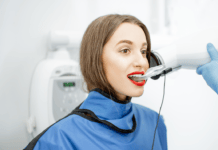The average dental hygienist has an allotted one-hour time slot for her or his patients. This time allotment often does not change whether the patient is in the operatory chair for a six-month prophy, periodontal maintenance, or periodontal therapy. Some dental hygienists actually have 40 to 45 minutes of allotted time per patient, making their workday impractical, inconvenient, and definitely more stressful than it needs to be.
Hygienists are usually in a race against the clock to get everything on their checklist completed in that mere one-hour appointment, not just completed but to the highest standard of completion! For some reason, we have the innate attribute of trying to attain the highest standards for our patients at the cost of ourselves. We feel personally responsible for the oral health and oral-systemic connection for most patients in our chair. I am completely guilty of this.
Do Your Best
It took me 34 years to realize this, but your sanity and success as a hygienist in today’s challenging workplace can be summarized in three simple but all-so-important words: Do your best! That’s all we would ask of anyone else, so why not ask that of ourselves.
Sometimes the best relationship that results in improved oral hygiene and overall health with our patients is to prioritize oral coaching and education over scaling off every colony of plaque, debris, deposit, or stain. The results will amaze you if you can change their oral homecare habits by being an amazing oral-systemic coach. Not only will you be amazed, but your patients will be as well. They will thank you and praise you for being the best hygienist they have ever had. I call this “working smarter, not harder.”
For example, a few years ago, I discovered the effectiveness of dry-brushing. I now recommend it to all of my patients as an adjunct to their daily oral homecare routines. This simple recommendation has resulted in much healthier mouths at three-, four-, or six-month therapy appointments. A dry bristle has the added benefit of “gription,” as I call it. The “slip and slide” of over-foaming toothpaste (with its fresh taste and tingly sensation) often disguises a still plaque-infested gingival margin.
Demonstrating dry brushing using the modified Bass technique is my most successful coaching method. Take time to use a hand mirror and show the patient how to massage the dry brush into the gingival margin and “wiggle” it between the teeth. Do this on one-half of their mandibular linguals for best effect. Their tongue will tell the story as it glides over smoother and cleaner teeth.
Dry brushing does not need to be done every day, but I encourage it as a frequent routine. After dry brushing, instruct the patient to either add toothpaste for more antimicrobial freshness and fluoride or follow up with a recommended or favorite mouth rinse. Another suggestion is to rinse vigorously with an effective mouth rinse and follow up with dry brushing. This is simple, effective, and better than skipping out on a brushing due to laziness.
This is but one simple method I have found that helps me “do my best” as it results in time saved at subsequent appointments when patients arrive with a healthier mouth. Time well spent on coaching saves time at future appointments.
I am also an advocate for alternating between electric and manual toothbrushes for best results. I find they complement each other for ultimate plaque removal.
Over the years, we have been given added duties and responsibilities to our dental hygiene protocol that quite frankly simply do not fit into a one-hour timeslot. They include but are not limited to the checklist below.
The Unrealistic Checklist (or Radical checklist?)
- Sterilize instruments (debride, bag, tag, sterilize)
- Decontaminate and sanitize operatory
- Set up for patient (the reality is, this actually takes time even when trays are prepared ahead of time)
- Do a quick run for stock and supplies as needed
- Perhaps sharpen a batch of dull instruments
- Meet and greet patient (I sure do miss those handshakes)
- Review health history and go over medications (sure helps if front desk makes sure Hx is updated before the patient is seated)
- Take blood pressure
- Q&A any dental concerns patient may have
- Introduce laser bacterial reduction to the patient (if applicable) and get permission
- Pre-op rinse: 15 to 60 seconds depending on rinse
- Radiographs: FMX (even though no extra time was scheduled. Hint: next time, schedule according to your needs) BWX4, BWX7, and perhaps a few necessary periapicals as well as panographic image
- Digital series: orthodontic quality
- Intraoral pictures as needed
- Oral cancer screening, extra- and intraoral
- TMD evaluation and discussion as needed
- Periodontal examination, either a full charting or screening as well as discussion
- Screening for caries, bruxism, abfractions, cracks, broken fillings, leaking restoration, overhangs, and discussion
- Prophylaxis, pre-polishing greatly reduces time spent scaling
- Sealants, wishing you could sprout out two more arms to assist you
- Periodontal maintenance, pre-polish again to help reduce supra-biofilm
- Periodontal therapy: scaling and root planning, hopefully with sharp instruments
- Anesthesia (injections or nitrous all take extra time)
- Oral hygiene instruction: including demo with a hand mirror
- Oral health/systemic relationship education, which is extremely important
- Comforting words, comforting therapies, comforting gestures
- Small talk: Patients appreciate it when you remember things about their life, their work, their family, their vacations, etc.
- Flossing: (I don’t know about you, but I am so tired of flossing for my patients. Sometimes I ask permission, and surprisingly some of them say, “No thanks.”
- Fluoride varnish: don’t skip this step if possible (includes educating adults on the benefit of fluoride and having that discussion regarding the noninsurance benefit)
- Nutritional counseling
- Tobacco counseling, which now includes vaping and marijuana
- Decay education
- Acid reflux education
- Recommendations about products, hygiene therapy frequency, oral hygiene technique, etc.
- Posting treatment and scheduling next hygiene therapy (They ask you to schedule for the entire family, so always refer to the front desk for that.)
- Doctor exam (My boss tends to sneak in when convenient for him, so that helps!)
- Q&A and summary of appointment
- Documentation (Do not skimp on your documentation, and do not sign until you are sure everything has been properly documented. Yes, this sometimes means going into your lunch hour or end of the day to finish your charts.)
- Handoff to scheduling coordinator, if needed
- Handoff to payment coordinator, if needed
- Pleasantries exchanged to have a great day, week, month, or even year! (Cuz, “I’ll be there for you!” Yes, that’s from the “Friends” theme song.)
- Gallop back to operatory to start all over. Rinse, lather, repeat eight to 10 times a day with negative-nanoseconds for a potty or water break.
Let Go and Show Concern
I am sure some of you do more, and some of you do less than the above checklist. It was put together rather quickly and not as an absolute. I have come to realize that when we give our everything, our soul, our essence, our being to every patient we see, we simply empty our everything, our soul, our essence, and our being. Let go. Let go of thinking that you have to cripple your body to remove every spicule of stain.
Consider instead spending the time and energy on individualized patient oral and systemic education. This is the ultimate way to work smarter, not harder.
Concern for a condition is an important way to bond with a patient. Let them know that you are noticing changes and simply need adequate time to properly evaluate your concern. If they are adamant about receiving their “cleaning” (I hate that word), have them come back for a comprehensive periodontal examination and radiographic series.
We should not do cookie-cutter treatments. It simply does not meet the needs of every patient or the needs of every practitioner. Perhaps a few intraoral pictures and brochures sent home with the patient regarding your dental concern will get the patient thinking and reassure follow-through. Document.
Know when to refer to a periodontist, period. Sometimes doing your best means letting another more qualified practitioner take care of your patient.
Block out time to sharpen instruments. You cannot do your best when the instruments are dull. Fatigue sets in. Burnished calculus is left behind. The appointment takes longer. Patients feel the extra hand pressure put on their teeth. You may have to address this with your employer and explain your situation.
Do Your Best
Doing your best does not mean you have to attain perfection with every patient. Often doing your best simply means listening to a patient who is lonely, depressed, or sick. Sometimes being your best means giving up a few things on that radical checklist to connect personally with a patient who may be going through some serious stuff in life. Sometimes doing and being your best involves a simple touch to a shoulder or a well-meaning hug.
I have found that I am not only an oral-systemic coach to my patients but occasionally a life coach as well. Perhaps instead of being our best, we should simply strive to be better. As long as we continue to be our best, we are actually striving to be a better version of ourselves. We are always pleased when our patients improve and show better oral health, so we too should be pleased when we are a better version of ourselves. Do your best and reclaim your purpose.
Before you leave, check out the Today’s RDH self-study CE courses. All courses are peer-reviewed and non-sponsored to focus solely on high-quality education. Click here now.












